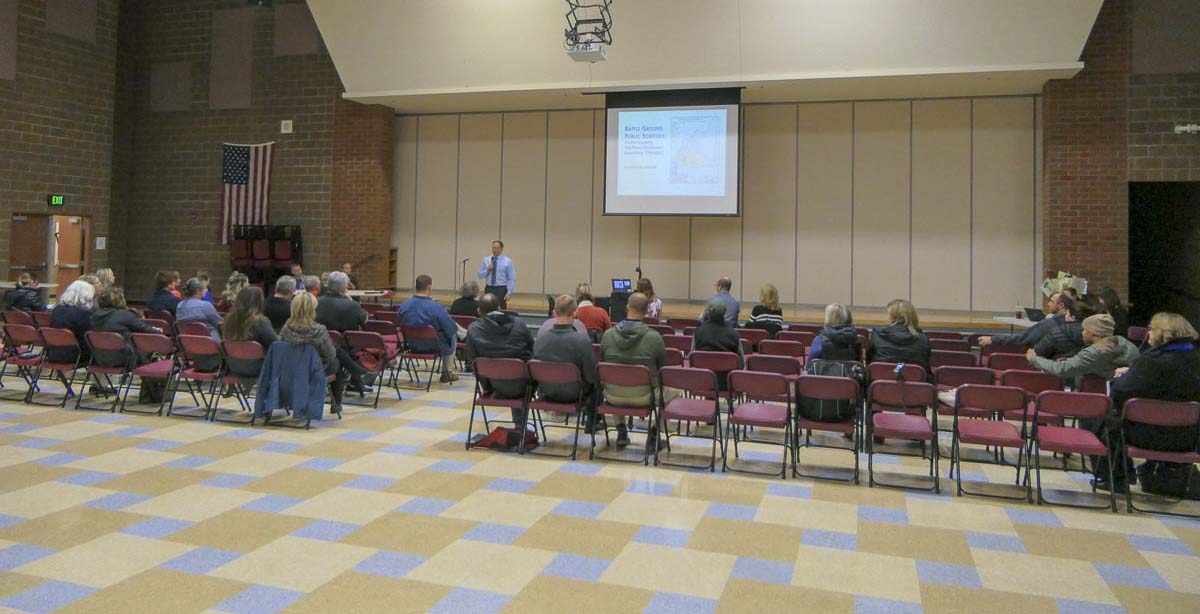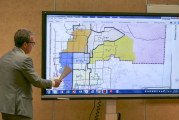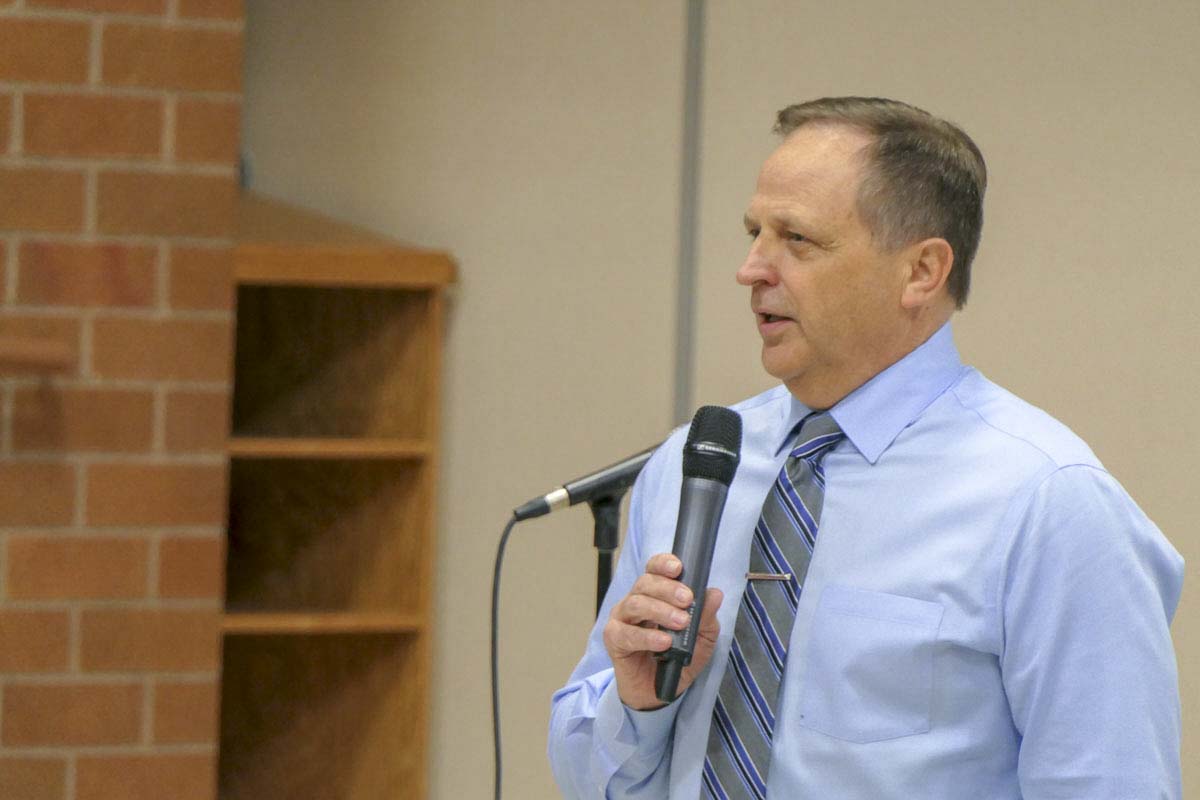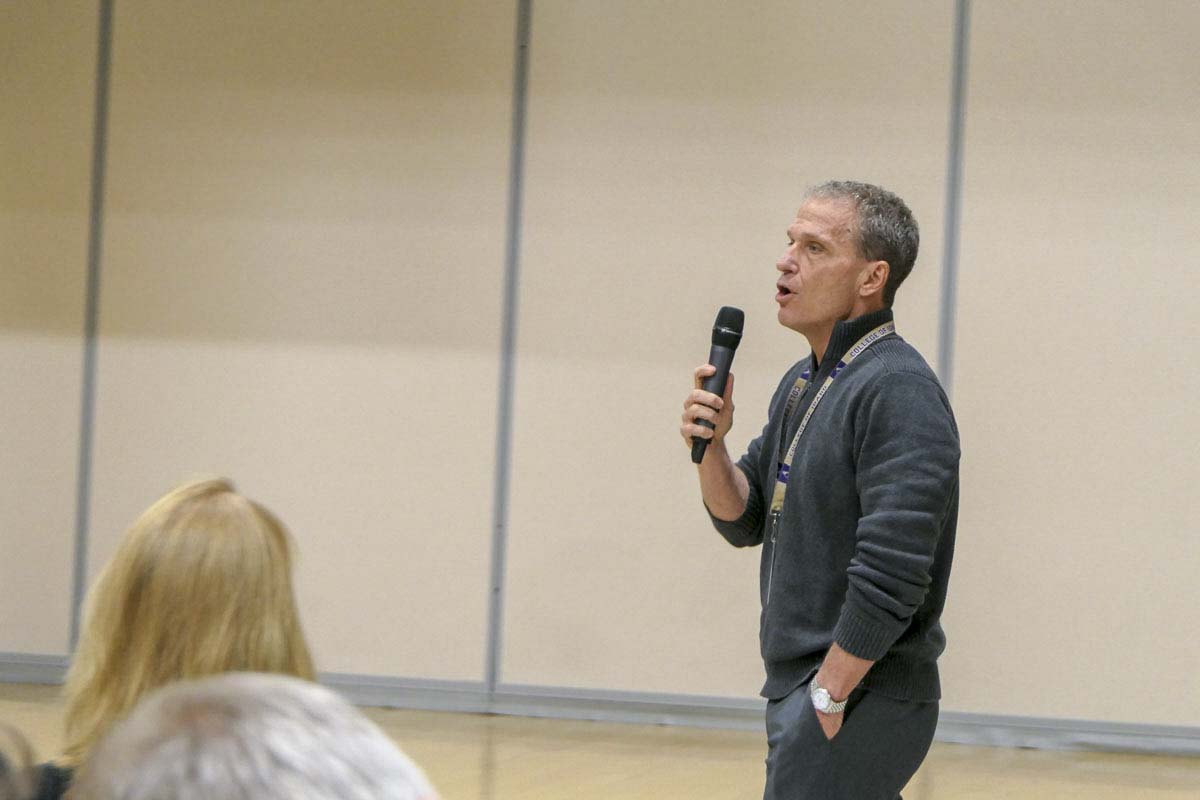The school board is expected to pick an option Monday to address overcrowded southern schools
BATTLE GROUND — The road Battle Ground School District has been on since failing once again to get a building bond approved by voters last year may end this coming Monday. At least temporarily.

On Wednesday the district held the final of three question and answer sessions over its plan to deal with overcrowding. After a 30-member committee made up of administrators, school leaders, parents, and teachers came up with a list of four options, the board last month narrowed it to three.
You can read more about those options, and see maps of the proposed boundary changes here:
Battle Ground School Board seeks input on overcrowding options

The district has been seeking public input at listen and answer sessions at schools that would be most affected by boundary shifts. Wednesday’s session was at Daybreak School, which would likely see anywhere from 60 to 172 new students next year, depending on which option the board ultimately goes with.
Board Vice President Ken Root said feedback through their online survey, which closed at midnight Wednesday, had been largely split between the Southern Shift and the Maple Grove K-4 options, with the N.E.W. Boundaries Adjusted plan receiving the least support.

Deputy School Superintendent Denny Waters has been heading up the Overcrowding Committee’s work, and says it’s been tricky trying to find the best blend of changes. The district commissioned an analysis of potential growth in 2017, but has found that actual growth has been difficult to predict.
“This is scientific, but there is no crystal ball with this,” Waters told the crowd. “You never know what’s going to happen.”
For instance, the district had expected a student population explosion at Pleasant Valley School, but it largely never materialized.
“And the reason we didn’t (see it) is because, after the housing development was approved and the houses started being built, then you realize that houses that are being built are $500,000 or $600,000 houses and they’re not being purchased by families with young children,” said Waters.
Similar growth was forecast for the Daybreak campus, but many of the homes that have gone into the area since then are single-level homes, with fewer young students.
“All of us can see, as we drive around the roads, I mean we know that there are more people out here,” Waters said. “And yet our population for this upcoming year went down about a hundred students less than we were expecting.”

The difficulty with accurately forecasting student growth means that any boundary changes could need to be readjusted eventually, should new housing developments bring in an influx of students.
Even if the district decides to reintroduce some form of building bond, and voters approve it, Ross said it would still be up to three years before any new school would be ready for students.
“What we do recognize though is that right now, and it has been this way for 2, 3, 4 years, is that Glenwood and Laurin are way overcrowded,” Waters concluded.
Waters said the move to all-day kindergarten has dramatically increased enrollment at primary and middle schools in the district, creating some of the challenge with overcrowding. High schools haven’t been as impacted by those changes, due to an increased number of students choosing to go with alternative education, such as online classes or head start programs.
In response to a question about any potential impact of the boundary changes on the district’s two high schools, Waters said those boundaries won’t change. That, along with the increase in the use of alternative education should see population levels at Battle Ground and Prairie high schools stay relatively the same.
Speaking of alternative education, one question centered around whether the district had considered moving River HomeLink out of the old Maple Grove building along Eaton Boulevard, and using it as a new K-4 school.
Ross said the idea was discussed at length by the committee, but it turns out HomeLink is actually over capacity for the building.
“There’s actually, throughout the day, about 900 students that go through that campus for a building that’s built for about five or six hundred,” he said.
The option of moving River HomeLink faded when, Ross said, they couldn’t find anywhere to move the program.
“We don’t have a space to move a program that has 900 students anywhere else,” said Ross.
Another question was asked about whether any of the boundary shift options would potentially lead to overcrowding at other schools, such as Daybreak or Tukes Valley.
“It wasn’t our intent that we would shift students so that we brought overcrowding problems from one school to another,” responded Waters. “So, right now, with the changes that are up there, we would not have to add any additional portables.”
With overcrowding issues, at least temporarily, dealt with at Glenwood and Laurin, Waters said the district may be able to accommodate some boundary exceptions, on a limited basis, should there be families with a legitimate need to remain at the same school.
“Obviously, if we were moving 170 students out of Glenwood and all of those parents said ‘we don’t want to go, we want to stay in Glenwood,’ that’s not going to work,” he added.
As for transportation, the district believes the changes would not create major challenges or delays for students using the bus. While some would see the length of their route grow, the idea is that many would see more of a direct north-south commute, reducing the number of train crossings and east-west corridors they would have to travel.
One concern could be a greater number of students potentially missing class due to snow. Currently Battle Ground is divided into north schools and south schools. When there is snow in the hills, often school at northern schools can be canceled, while classes go on at southern schools where most students live at lower elevations. Waters said they are still examining how many more students might be impacted in the case of snow days.
The board is expected to examine any new online feedback, before their regular meeting next Monday. A decision is needed sooner, rather than later, to allow for the notification of impacted families, to do contractual negotiations with any teachers who would be affected, and to create time over the Summer for open houses and public involvement in the changeover process.




